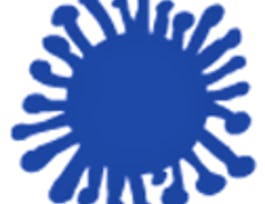This second of five courses focuses on how social determinants of health affects vulnerable populations. Focusing on four groups of vulnerable populations, students will examine how social determinants of health contribute to the poor health outcomes experienced by these populations. The topics of this course include:



Social Determinants of Health: Vulnerable Populations
This course is part of Social Determinants of Health: Data to Action Specialization


Instructors: Daniel J. Pesut, Ph.D., RN, FAAN
Sponsored by ITC-Infotech
Details to know

Add to your LinkedIn profile
8 assignments
See how employees at top companies are mastering in-demand skills

Build your subject-matter expertise
- Learn new concepts from industry experts
- Gain a foundational understanding of a subject or tool
- Develop job-relevant skills with hands-on projects
- Earn a shareable career certificate


Earn a career certificate
Add this credential to your LinkedIn profile, resume, or CV
Share it on social media and in your performance review

There are 5 modules in this course
In this module, we will discuss how poverty relates to health as we examine the interrelationships between poverty and other social determinants of health. In lesson one, we will define poverty, as we explore how poverty both causes and is caused by poor health. We will also look at some policy perspectives aimed at eradicating poverty. In lesson two, we will continue our discussion from lesson one, as we evaluate different approaches, perspectives and solutions to ending poverty. We will also consider how success is measured when evaluating the effectiveness of these proposed interventions.
What's included
3 videos7 readings2 assignments1 discussion prompt5 plugins
In this module, we will consider the gender-specific impact of social determinants of health on women. In lesson one, we will review what defines a health inequity for women and examine how gender acts as an axis of health disparity. Lesson two focuses on reproductive health and the need for contraception. We will look at how the SDOH shape resources and accessibility for women at global and national levels, and how reproductive rights are tied to human rights for girls and women. Lesson three continues to build on the content from previous lessons, with a more in-depth look at maternal health. We will investigate how the SDOH impacts aspects of maternal health with a focus on pregnancy related mortality and its prevalence on global and national levels. We will also examine how structural racism drives health disparities and specifically, maternal outcomes. In lesson four, we will summarize the factors that shape gender-based health disparities and the impact on women, while investigating policy-based strategies and resources to improve health outcomes for women while addressing SDOHs.
What's included
4 videos13 readings2 assignments1 discussion prompt
In this module, we focus on the social determinants of health in LGBTQI+ populations. In lesson one, we will define important terminology related to LGBTQI+ health needs as we look at LGBTQI+ vulnerabilities to the social determinants of health. In lesson two, we will examine how heteronormativity and cisnormativity can act as negative social determinants of LGBTQI+ health and wellbeing as we consider how media and language can perpetuate these inequalities. In lesson three, we consider how microaggressions, discrimination, and implicit bias can contribute to a healthcare system bias that negatively impacts the accessibility and quality of care received by LGBTQI+ patients. In lesson four, we will review key dates in LGBTQI+ history in the United States, as we investigate social and structural level changes that can improve LGBTQI+ health outcomes.
What's included
4 videos7 readings2 assignments1 discussion prompt2 plugins
In this module, we will examine the social determinants of health for families with young children and discuss policy-based strategies for improving health outcomes. In lesson one, we’ll explore the Rainbow Model as a way to understand how social determinants affect the health of young children. We will also review the different pathways through which socioeconomic circumstances influence health and contribute to child health inequalities. Applying what we learned in the previous lesson, in lesson two, we will look at a case study in order to investigate how social determinants influence a family’s ability to promote child health. Finally in lesson three, we will analyze some strategies for improving health outcomes for families with young children through policies that address social determinants of health.
What's included
3 videos2 readings2 assignments1 discussion prompt
This module will focus on analyzing, displaying and interpreting social determinants of health data, with a particular focus on comparing social determinants by group. Lesson one will provide an overview of t-test analysis and box plot visualization. In lesson two, we will learn how to conduct t-test analyses and create boxplots in R. Using the NHANES dataset, we will compare general health and Hgb a1c by gender. Using the Omaha System dataset, we will compare total signs & symptoms, social determinant of health signs & symptoms, and income signs & symptoms by gender. Finally, we will discuss how to interpret the results of our analysis as we visualize our findings using boxplots.
What's included
2 videos3 readings1 peer review1 discussion prompt1 ungraded lab3 plugins
Instructors


Offered by
Why people choose Coursera for their career




Recommended if you're interested in Health

Universiteit Leiden

Politecnico di Milano

Open new doors with Coursera Plus
Unlimited access to 10,000+ world-class courses, hands-on projects, and job-ready certificate programs - all included in your subscription
Advance your career with an online degree
Earn a degree from world-class universities - 100% online
Join over 3,400 global companies that choose Coursera for Business
Upskill your employees to excel in the digital economy



